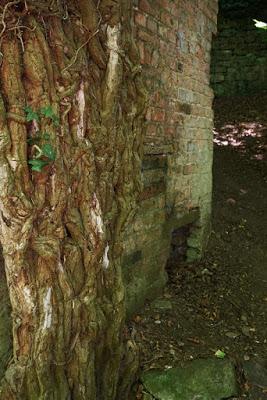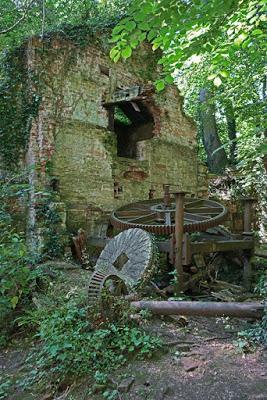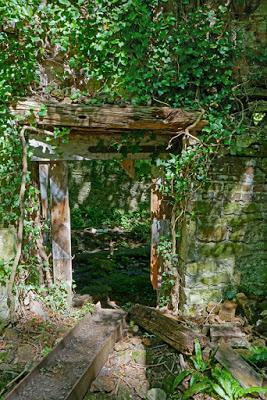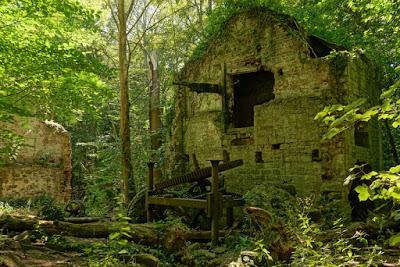
An old water mill lies in ruins, almost hidden in woodland. It can only be reached by descending a slightly precarious, steeply downhill route from the footpath above. Trees and grasses grow through, around, and even over it, filtering the sunlight to a slightly eerie green. The nearby stream, no longer feeding the wheel, can be heard in the background.
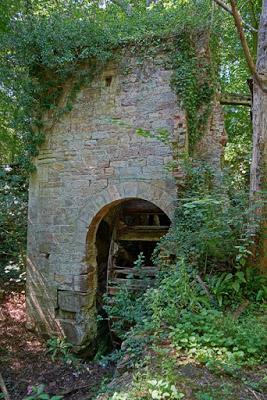
This mill used to grind corn for the village of Hawarden, Flintshire; there is little information about it online, but it was built in 1767 for the landowner, Sir John Glynne. (His descendant Catherine Glynne would marry William Ewart Gladstone, so the land is now known as the Gladstone Estate.) It was later enlarged, rising to three storeys, and drove three pairs of stones; it apparently remained in use until the 1940s.
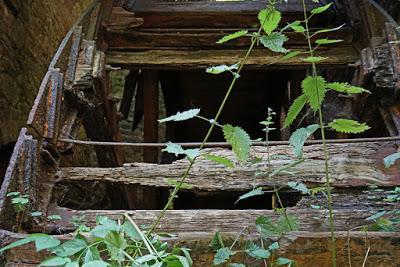
Much of the machinery, including the waterwheel and grinding wheels, is still on site. The millpond is silted, and parts of the culvert which carried water to the wheel have rotted away.
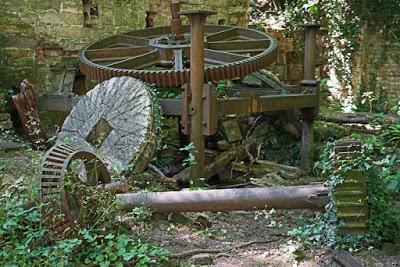
The neighbouring chimney's purpose is unclear, but it seems to date from an unsuccessful attempt in the 1860s to convert the mill to steam power.
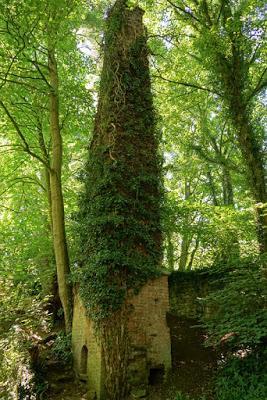
While there is always an air of sadness to ruined buildings, the mill's abandonment also gives it a certain magic. There is something special about clambering around ruins which are being absorbed back into nature, their fixtures not neatly preserved but lying crookedly where they fall.
